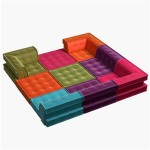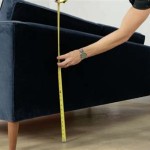Types of Leather Sofas: A Guide
Leather sofas are a popular choice for homeowners, offering a luxurious and durable seating option. However, not all leather sofas are created equal. There are many different types of leather used in sofa construction, each with its own unique characteristics and price point. Understanding the various types of leather available will help you make an informed decision that aligns with your budget and desired aesthetic.
Full-Grain Leather
Full-grain leather is considered the highest quality and most durable type of leather available. It is made from the top layer of the hide, which retains all of its natural grain and markings. This results in a leather that is strong, breathable, and naturally water-resistant. Full-grain leather develops a beautiful patina over time, becoming softer and more characterful with age. However, it is also the most expensive type of leather.
Here are some of the key characteristics of full-grain leather:
- Strong and durable
- Breathable and comfortable
- Naturally water-resistant
- Develops a beautiful patina with age
- Most expensive type of leather
Top-Grain Leather
Top-grain leather is the second most common type of leather used in sofa construction. It is made from the top layer of the hide but has been sanded and buffed to create a smoother surface. This process removes some of the natural markings and imperfections, resulting in a more consistent appearance. Top-grain leather is still durable and comfortable but is less expensive than full-grain leather.
Here are some of the key characteristics of top-grain leather:
- Durable and comfortable
- Smoother surface than full-grain leather
- More consistent appearance
- Less expensive than full-grain leather
Split-Grain Leather
Split-grain leather is made from the lower layer of the hide, which has been split from the top layer. This type of leather is less durable than full-grain or top-grain leather because it lacks the natural strength of the top layer. To compensate for this, split-grain leather is often treated with a coating to make it more durable and water-resistant. Split-grain leather is the least expensive type of leather and is often used in lower-priced sofas.
Here are some of the key characteristics of split-grain leather:
- Less durable than full-grain or top-grain leather
- Often treated with a coating to increase durability and water resistance
- Least expensive type of leather
Bonded Leather
Bonded leather is not actually leather but a type of leather by-product. It is made from leather scraps that are ground up and then mixed with a binder to create a sheet of material. Bonded leather is the least expensive type of leather but also the least durable. It is often used in furniture that is intended for low-traffic areas. It feels and looks less like leather than the others.
Here are some of the key characteristics of bonded leather:
- Made from leather scraps and a binder
- Least durable type of leather
- Least expensive type of leather
- Often used in furniture intended for low-traffic areas
In addition to leather type, it is important to consider the following factors when choosing a leather sofa:
- Leather finish: There are many different leather finishes available, from smooth and polished to distressed and textured. Choose a finish that compliments your personal style and the overall aesthetic of your home.
- Leather thickness: Thicker leather is generally more durable and will last longer. However, it is also heavier and more expensive.
- Color: Leather sofas come in a wide variety of colors. Choose a color that complements your existing furniture and décor.
- Maintenance: Leather sofas require regular cleaning and conditioning to keep them looking their best. Be sure to choose a sofa made from leather that is easy to care for.
By carefully considering these factors, you can select a leather sofa that will provide you with years of enjoyment and comfort.

Leather Sofa Guide Living Spaces

Leather Sofa Guide Living Spaces

The 2024 Ultimate Guide To Leather Furniture

Types Of Leather Furniture Pottery Barn

Leather Sofas Luxurious Living Room Furniture

The 2024 Ultimate Guide To Leather Furniture

Guide To Leather Furniture

Guide To Leather Furniture

Types Of Leather For Furniture The Home Depot

Types Of Leather What To Know When Ping For A Sofa








